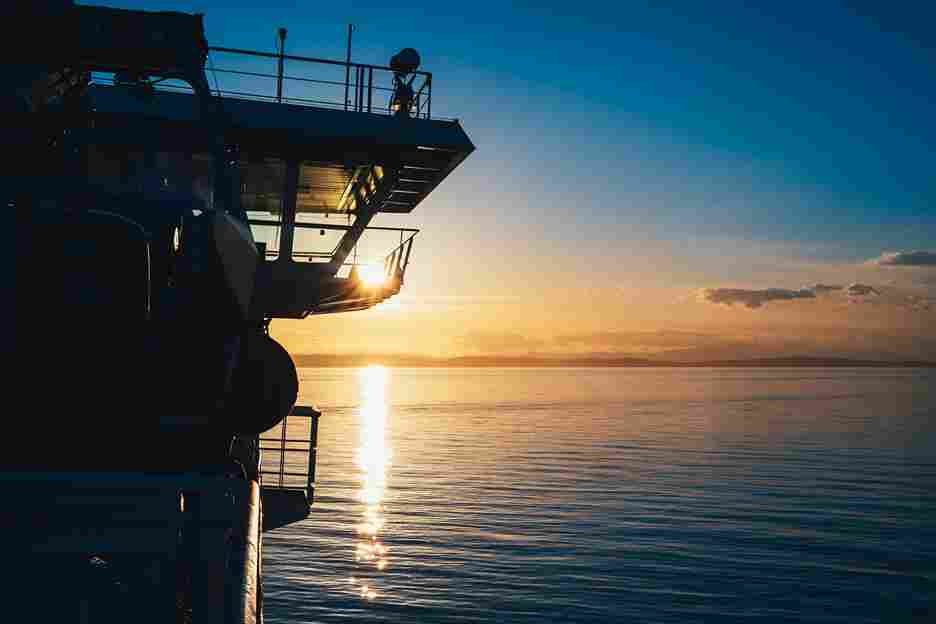
The Future of Wind-Assisted Propulsion in Commercial Shipping
Energy-efficient ship designs represent a pivotal advancement in the maritime sector, offering significant economic benefits alongside environmental advantages. This article explores how modern ship designs prioritizing energy efficiency can lead to cost savings, operational efficiencies, and sustainable financial outcomes for shipowners and operators.
Importance of Energy-Efficient Ship Designs
Energy efficiency in ship design focuses on minimizing fuel consumption, operational costs, and environmental impact through:
- Optimized Hull Shapes: Streamlined designs that reduce drag and enhance hydrodynamic performance.
- Advanced Propulsion Systems: Integration of fuel-efficient engines, hybrid propulsion, and energy recovery technologies.
- Smart Systems and Automation: Utilization of digitalization and automation to optimize onboard operations and reduce energy usage.
Economic Benefits
- Fuel Cost Reduction:
- Lower Fuel Consumption: Energy-efficient designs significantly decrease fuel consumption per nautical mile, translating directly into cost savings.
- Operational Efficiency: Improved fuel efficiency extends voyage distances per refueling, reducing downtime and associated costs.
- Lifecycle Cost Savings:
- Reduced Maintenance Expenses: Energy-efficient technologies often require less maintenance and downtime, lowering overall lifecycle costs.
- Enhanced Longevity: Investments in energy-efficient designs contribute to vessel longevity and competitiveness in the global marketplace.
- Compliance and Market Access:
- Emission Compliance: Meeting stringent emissions regulations, such as those under MARPOL Annex VI, avoids penalties and enhances regulatory compliance.
- Access to Sustainable Markets: Attracting environmentally conscious customers and markets that prioritize sustainable shipping practices.
Case Studies and Examples
Noteworthy examples illustrate the economic benefits of energy-efficient ship designs:
- Container Vessels: Companies like Maersk Line have invested in Triple-E class container ships, which demonstrate improved fuel efficiency and operational profitability through innovative design and propulsion systems.
- Bulk Carriers: Energy-efficient bulk carriers equipped with optimized hull designs and fuel-efficient engines showcase reduced operational costs and increased profitability.
Investment in Sustainability
Investing in energy-efficient ship designs is increasingly recognized as a prudent financial decision:
- Return on Investment (ROI): Despite higher initial costs, the ROI from fuel savings and operational efficiencies over the vessel’s lifespan outweighs upfront expenditures.
- Risk Management: Mitigating risks associated with fuel price volatility through reduced consumption and reliance on alternative propulsion systems.
Future Trends and Industry Outlook
The future outlook for energy-efficient ship designs is promising, driven by technological advancements and regulatory imperatives:
- Technological Innovation: Ongoing development of hybrid propulsion, alternative fuels, and digital solutions to optimize vessel performance and energy management.
- Regulatory Landscape: Stricter emissions standards and incentives for sustainable shipping practices encourage further adoption of energy-efficient designs.
- Industry Collaboration: Collaborative efforts among shipowners, shipbuilders, technology developers, and regulators accelerate innovation and the implementation of green technologies.
Conclusion
Energy-efficient ship designs offer compelling economic advantages, positioning them as essential components of sustainable maritime practices. By reducing fuel consumption, lowering operational costs, and enhancing regulatory compliance, these designs support profitability while contributing to environmental stewardship. As the maritime industry moves towards a greener future, embracing energy efficiency in ship design remains a pivotal strategy for achieving long-term economic viability and sustainability objectives.
write a new article on The Future of Wind-Assisted Propulsion in Commercial ShippingChatGPT
The Future of Wind-Assisted Propulsion in Commercial Shipping: Harnessing Sustainable Innovation
Wind-assisted propulsion represents a promising frontier in the quest for sustainable shipping practices. This article explores the evolution, benefits, challenges, and future potential of wind-assisted propulsion technologies in commercial shipping.
Evolution of Wind-Assisted Propulsion
Wind-assisted propulsion, once a staple of maritime history with sailing ships, is experiencing a resurgence driven by advancements in technology and a global push towards decarbonization. Modern wind-assisted propulsion systems integrate cutting-edge design and renewable energy principles to enhance vessel efficiency and reduce environmental impact.
Benefits of Wind-Assisted Propulsion
- Fuel Savings and Efficiency:
- Supplementary Power: Wind propulsion systems harness wind energy to supplement conventional propulsion, reducing fuel consumption and operational costs.
- Optimized Performance: Improved aerodynamics and sail designs optimize wind capture efficiency, enhancing vessel speed and operational flexibility.
- Environmental Sustainability:
- Emission Reductions: Wind-assisted propulsion systems decrease greenhouse gas emissions, aligning with international emissions standards and regulatory requirements.
- Carbon Footprint: Contributing to overall carbon footprint reduction in global shipping operations, supporting sustainable development goals.
Challenges and Innovations
Despite its benefits, wind-assisted propulsion faces challenges:
- Technological Integration: Developing robust and reliable systems that integrate seamlessly with existing vessel designs and operations.
- Operational Adaptation: Addressing crew training, maintenance requirements, and operational adjustments to optimize wind propulsion efficiency.
- Economic Viability: Balancing upfront investment costs with long-term fuel savings and operational efficiencies to ensure economic viability for shipowners.
Innovations are addressing these challenges:
- Advanced Sail Designs: Utilizing lightweight materials, automated rigging systems, and adjustable sail configurations to maximize wind capture efficiency.
- Hybrid Systems: Integrating wind-assisted propulsion with conventional engines and alternative fuels to enhance flexibility and operational reliability.
- Digitalization and Monitoring: Implementing IoT sensors and data analytics for real-time performance monitoring and optimization of wind-assisted systems.
Future Outlook
The future of wind-assisted propulsion in commercial shipping is promising:
- Technology Advancements: Continued research and development to enhance system efficiency, reliability, and scalability.
- Regulatory Support: Alignment with international regulations and incentives promoting sustainable shipping practices and emissions reduction.
- Industry Collaboration: Partnerships among stakeholders to drive innovation, share best practices, and accelerate adoption of wind-assisted propulsion technologies.
Conclusion
Wind-assisted propulsion represents a sustainable solution for reducing fuel consumption, lowering emissions, and enhancing operational efficiency in commercial shipping. As the maritime industry embraces renewable energy sources and strives towards carbon neutrality, wind-assisted propulsion technologies are poised to play a significant role in shaping the future of sustainable maritime transport. With ongoing advancements and collaborative efforts, wind-assisted propulsion holds promise as a key driver towards a greener and more resilient shipping industry.





